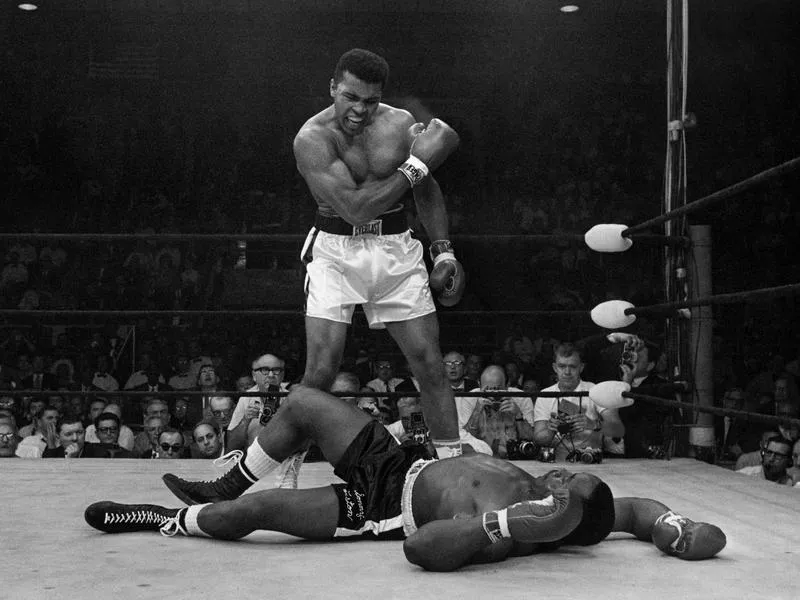
Heavyweight champion Muhammad Ali stands over fallen challenger Sonny Liston after dropping Liston with a short, hard right to the jaw on May 25, 1965, in Lewiston, Maine. The bout lasted only one minute into the first round. John Rooney / AP Photo
A year after their first fight, Ali and Liston squared off once again. The fight was supposed to take place in late 1964 at the Boston Garden, but after Ali suffered an injury and Massachusetts regulators insisted promoters were tied to organized crime, it was moved to May 25, 1965, and took place in Lewiston, Maine.
Only 2,434 fans were in attendance that night, and they didn’t see much of a fight. During the first round, Ali countered a jab with a quick punch, and Liston fell to the canvas. Ali failed to go to a neutral corner and instead posed over his fallen rival in a taunting fashion (one immortalized by a Neil Leifer photograph). Liston rose from the canvas after the delayed count, but the fight’s timekeeper had counted him out.
To this day, some claim the fight was fixed. Sports Illustrated reporter Mark Kram claimed Liston told him he wanted nothing to do with Ali and went down without being hit. Whatever the case may have been, Liston never achieved such heights in boxing again. He won 15 of his last 16 fights before dying amid mysterious circumstances in 1970.